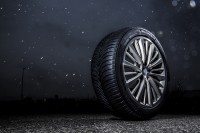First blood to import tariffs?
No sooner had Shandong Deruibao Tire Co., Ltd. entered into apparent “restructuring” proceedings on 7 February then we at Tyres & Accessories started hearing about it on the grapevine (see page 40 for full coverage of this story). Of course, companies face difficulties in any business from time to time, but this case has particular resonance with many because it is emblematic of what is going in China. There are two things the market is interested in – what’s behind the pressures Deruibao are facing and what the knock-on effects will be.
Dealing with the first point first, when looking into this story it becomes rapidly apparent that the answer to what is behind Deruibao’s pressures has a two-fold answer. The first part is the pressure the Obama administration’s latest round of import tariffs has put on Chinese manufacturers that export any significant volumes to the US. This was something that the Chinese government latched onto very quickly – probably due to the political currency attached to assertions that the US’s perceived protectionism is pressurising businesses in the People’s Republic. Indeed, this line even showed up in a Russian magazine that published a lifted translation of T&A’s coverage of the Deruibao story alongside a cartoon of an Obama-caricature kicking a tyre into a domino rally. The unwritten meaning is, of course, that tyre tariffs could trigger a domino rally in China. But there is more to it than that.
In reality this case reveals what was already going on in China. The import tariffs simply emphasised the pre-existing problem of oversupply in tyre states like Shandong province. For years we have seen new 10 and even 20 million unit a year factories pop up out of nowhere with no clear strategy of exactly how these quantities are going to a) be sold and b) be developed into added value brands as opposed to commodity products. At the same time, such factories have become victims of the success of other Chinese manufacturers that have also embarked on similarly large-scale expansion programmes, but have also invested in international marketing, OE and branding strategies. In essence they have been competing with the world and with up-and-coming Chinese brands that are becoming players in the global top 20 at the same time. Without added value, such firms are inevitably taking part in a race to the bottom. And – rather like any good skydiver will tell you – a race to the bottom has no winners.
Contagion – has China caught a cold?
Forget swine or bird flu, this latest incident raises the possibility of contagion in the Chinese tyre market. Firstly, because the Deruibao factory was contracted to produce tyres for others and secondly because it was producing tyres for some of the largest trading houses in China. If the factory is struggling, these companies are going to have to find creative ways of meeting the demands of their customers. The problem is that multiple sources with close connections to Chinese tyre manufacturers told T&A that a number of Shandong’s tyre factories were closing down production over the recent Chinese new year break (which is normal) and were not in any hurry to start up again (which isn’t).
One possible outcome is domestic consolidation, something that has been predicted in this column before. Indeed, that seems to be the Chinese government’s goal with Deruibao (again, see page 40 for more). However, whether or not Qingdao Doublestar does turn out to be the lead suitor, a purchase would only mean that Doublestar has to solve the same oversupply and export problems facing anyone producing in China. On the contrary, rather than continuing to building up production capacity within their homeland, there is increasing evidence that Chinese tyre makers are looking to place new production capacity abroad. For it’s part Doublestar has been linked to the sale of some of Trayal’s production capacity. For them, the attraction is likely to be Serbia’s location incentives – namely the country’s links with Russia (it’s pretty much the only place in the continent with a positive trade tariff deal with Russia). Other than that, Europe is generally ruled out because of its demanding regulatory environment and what one source described as “cultural differences”.
Another option, ironically, is the US, where firms such as Giti have broken ground on large scale production investments. While Giti has opted for a plant within the US itself, the other route in is via the NAFTA free trade agreement, which may suggest something like a Mexican production base. However, the consensus is that the Chinese will stay closer to home and continue to invest in South East Asian locations such as Thailand, where a number of firms have export-oriented factories.
But these theories all exclude the takeover option. Something we learnt from the erstwhile Apollo – Cooper takeover was that there was real takeover ambition within the ranks of Chengshan. Bearing in mind that Chengshan is not the largest company in China, this means it is highly likely that some of the top five firms are considering their options in this respect too. The question is – who are they looking at? The obvious answer for a firm looking to become a global player is to buy a firm around the top 10 of global tyre makers, and for years the chatter has centred around Cooper. Now Apollo and Chengshan have pretty much ruled themselves out of any imminent bids for Cooper, it has to be said that the firm still looks a likely candidate for anyone wanting to buy a pre-packaged North American business. However, based on improving financial results, if they do, any such company would have to offer a higher price.
Which brings us back to internal consolidation options and regional expansion. Difficulties there clearly are. And contagion there may be. But it is far from clear what kind of cold the Chinese tyre market has caught and who will catch it.




Comments